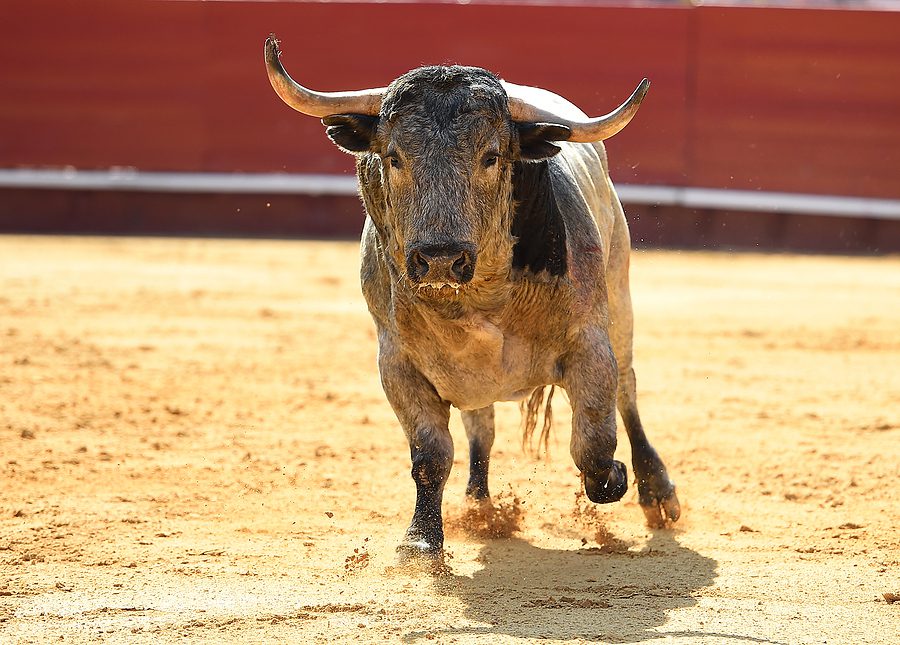The city of Pamplona would have been packed with thousands of visitors last month, but for the second consecutive year, the annual “Running of the Bulls” was canceled due to COVID-19. That didn’t stop hundreds of Earnest Hemingway look-alikes hosting their own “Running of the Bulls” last weekend in Key West, Florida.
The annual event hosted by Sloppy Joe’s attracts thousands to America’s southernmost point on the east coast each year as bearded men dress up as the famous author and ride fake bulls.
All of this running with the bulls news got us thinking. Are bulls aggressive and will they actually attack a human?
We’ve all seen on television bull fights and the annual running with the bull event, but is there something else in play here or are bulls just jerks who like to attack people?
According to The University of California at Berkeley, bulls get a bad reputation from their sheer size alone.
“By virtue of their size and disposition, bulls may be considered as one of the most dangerous of domestic animals. Farm procedures should be designed to protect human safety and to provide for bull welfare,” the university said in a study published online. “Everyone who comes into contact with bulls should recognize the various body postures of threat and aggression. This is the only way a person can stay mentally and physically ahead of the bull.”
Bulls will typically not seek out and attack humans. Usually, bull attacks occur when humans get too close to the animal’s own space or put the animal in a position where it feels threatened. If you keep your distance, you should not have any issues, but if you do happen to find the urge to get up close and personal with a bull, the animals give off signs and signals when they’re getting annoyed. If you annoy a bull, you might just find yourself in a bad situation, so it’s best to avoid the entire scenario.
“You can get clues to a cow’s mood and condition by observing the tail. When the tail is hanging straight down, the cow is relaxed, grazing, or walking, but when the tail is tucked between the cow’s legs, it means the animal is cold, sick, or frightened. During mating, threat, or investigation, the tail hangs away from the body. When galloping, the tail is held straight out, and a kink can be observed when the animal is in a bucking, playful mood,” UC Berkeley’s report reads. “
A few years ago, a teacher in Spain wanted to teach students that if you don’t provoke a bull, they won’t attack you. In the video below you can see the bull running between the students, avoiding them. Typically bulls in events such as the running of the bulls and in bullfighting are provoked prior to being released. In bullfighting, the bulls are provoked by gestures and motions. In Spain the mere action of corralling the bulls is provoking enough, let alone unleashing the animals into crowded streets full of people taunting the animal, pulling its rope, gesturing and challenging the bull.
Both activities have been described as animal abuse by animal rights activists and there’s a never-ending lobby to cease both events.
